Address
304 North Cardinal
St. Dorchester Center, MA 02124
Work Hours
Monday to Friday: 7AM - 7PM
Weekend: 10AM - 5PM
Address
304 North Cardinal
St. Dorchester Center, MA 02124
Work Hours
Monday to Friday: 7AM - 7PM
Weekend: 10AM - 5PM
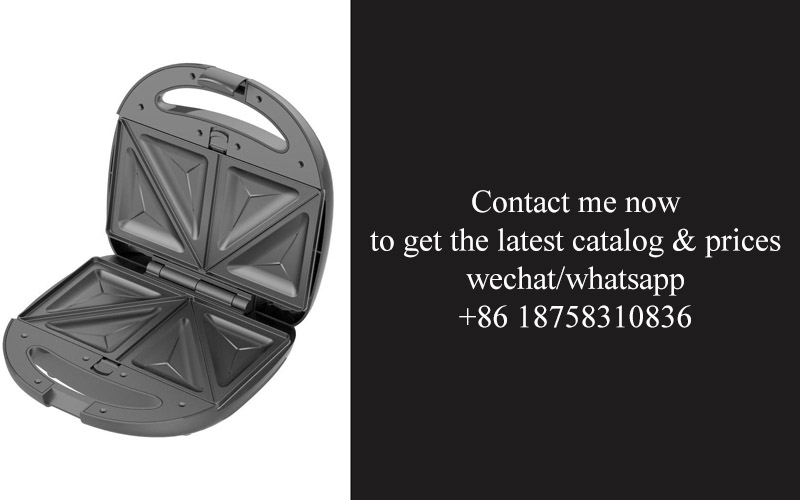
In the ever-evolving landscape of kitchen appliances, the air fryer has emerged as a game-changer, transforming the way we cook and consume food. This compact kitchen gadget, once a niche product, has now become a staple in many households. With advancements in technology and design, the market for air fryers has expanded, offering a plethora of options to consumers. This article delves into the innovative world of air fryers, exploring the latest trends, the significance of certifications like UL, the potential of OEM models, and the impact of data-driven insights on product development. Through case studies of successful turnkey projects, we aim to provide a comprehensive overview of the future of air fryer OEM and turnkey solutions.
The air fryer market has experienced a remarkable surge in popularity over the past decade, becoming a staple in modern kitchens worldwide. These compact kitchen appliances have revolutionized the way we cook, offering a healthier alternative to traditional frying methods. As a testament to their growing popularity, the market has seen a plethora of brands and models emerge, each promising to deliver the ultimate cooking experience.
With the rise of health consciousness and the increasing demand for quick and easy meal solutions, air fryers have captured the imagination of consumers. They offer a unique blend of convenience and health benefits, allowing users to enjoy crispy, golden-brown foods with significantly less oil compared to deep-frying. This has made air fryers a favorite among health enthusiasts and busy individuals alike.
The market for air fryers is diverse, catering to various consumer preferences and budgets. From entry-level models that provide the basics to high-end units with advanced features like smart technology and programmable settings, there is an air fryer to suit every need. The versatility of air fryers has also contributed to their widespread adoption, as they can be used to prepare a wide range of dishes, from crispy fries and chicken to vegetables and desserts.
One of the key drivers behind the growth of the air fryer market is the shift towards healthier lifestyles. The health benefits of air frying, such as reduced calorie intake and lower levels of trans fats, have made it an attractive option for those looking to improve their diet. Additionally, the convenience of air frying, which allows for meal preparation without the mess and hassle of traditional frying, has further bolstered its appeal.
As the market continues to expand, manufacturers are constantly seeking ways to innovate and differentiate their products. This has led to the development of new features and technologies, such as adjustable temperature controls, non-stick coatings, and even air fryers that can be connected to smartphones for remote control and monitoring. These advancements not only enhance the user experience but also contribute to the market’s dynamic nature.
Moreover, the market is not limited to traditional air fryers; it has also seen the emergence of multi-functional appliances that combine the capabilities of an air fryer with other cooking methods, such as oven roasting or grilling. These multi-functional units have become increasingly popular as they offer users the versatility to create a wide array of dishes without the need for multiple appliances.
In terms of geographic distribution, the air fryer market is experiencing rapid growth in regions such as North America, Europe, and Asia. The high disposable income in these areas, coupled with a growing interest in healthy cooking, has created a fertile ground for air fryer sales. However, it is important to note that the market is not without its challenges. Competition is fierce, and manufacturers must continually innovate to stay ahead.
In the wake of this market growth, there is a clear trend towards turnkey solutions. Turnkey solutions refer to pre-assembled and tested appliances that are ready for installation and use. For manufacturers, offering turnkey solutions can streamline production and reduce costs. For consumers, it means a product that is ready to go out of the box, saving them time and effort.
The rise of turnkey solutions in the air fryer market is also driven by the increasing demand for convenience. In today’s fast-paced world, people are looking for products that offer simplicity and efficiency. Turnkey air fryers fulfill this need by providing a hassle-free experience from the moment they are purchased.
Furthermore, the integration of UL (Underwriters Laboratories) certification into turnkey air fryer solutions is a critical factor. UL certification is a mark of quality and safety, ensuring that the appliance meets stringent safety standards. This certification is not only a testament to the product’s reliability but also a key selling point for manufacturers looking to build trust with consumers.
In conclusion, the air fryer market is a dynamic and rapidly growing sector of the kitchen appliances industry. With the increasing emphasis on health, convenience, and technological innovation, air fryers have become a must-have item for many households. As the market evolves, the trend towards turnkey solutions and the importance of UL certification are poised to play significant roles in shaping the future of air fryer manufacturing and consumer preferences.

In the ever-evolving landscape of kitchen appliances, there’s a noticeable shift towards turnkey solutions. These comprehensive packages offer a streamlined approach to product development, manufacturing, and distribution, making them increasingly popular among manufacturers and retailers alike. Let’s delve into the reasons behind this growing demand.
The convenience factor is undeniable. Turnkey solutions provide a one-stop shop for companies looking to enter new markets or expand their product lines. By handling everything from design to final delivery, these solutions eliminate the need for multiple vendors and the complexities that come with managing various suppliers. This holistic approach saves time and resources, allowing businesses to focus on their core competencies.
Another driving force behind the popularity of turnkey solutions is the rapid pace of innovation in the kitchen appliance industry. New technologies and features are constantly emerging, and companies need to stay ahead of the curve to remain competitive. Turnkey providers often have a finger on the pulse of the latest trends, ensuring that the products they deliver are not only innovative but also market-ready.
Customization is also a key factor. While mass-produced items have their place, many businesses are seeking products that cater to specific market needs or customer preferences. Turnkey solutions often offer a level of customization that is difficult to achieve when sourcing components from various suppliers. This ability to tailor products to niche markets can be a significant competitive advantage.
The cost-effectiveness of turnkey solutions cannot be overlooked. By consolidating the manufacturing process, these solutions can often reduce production costs, which can be passed on to the consumer. This makes turnkey products an attractive option for both budget-conscious consumers and businesses looking to offer value-driven products.
Moreover, the support and expertise provided by turnkey partners are invaluable. These providers not only offer a product but also the knowledge and experience needed to navigate the regulatory landscape, particularly in industries like kitchen appliances where safety and compliance are paramount. This includes obtaining certifications like UL (Underwriters Laboratories), which is a crucial step in ensuring that products meet stringent safety standards.
The rise of e-commerce has also played a role in the demand for turnkey solutions. Online retailers are looking for efficient ways to stock their warehouses and meet customer expectations for fast delivery. Turnkey providers can offer ready-to-sell products that are already packaged and ready for distribution, reducing the time and effort required for retailers to get products onto their shelves.
Innovation in supply chain management has further fueled the demand for turnkey solutions. As companies seek to optimize their logistics and reduce lead times, turnkey providers can offer just-in-time manufacturing and delivery, ensuring that products are available when and where they are needed.
Additionally, the environmental impact of manufacturing and distribution is a growing concern. Turnkey solutions often come with sustainable practices and eco-friendly options, which appeal to consumers who are increasingly conscious of their carbon footprint. This green approach can also be a differentiating factor for businesses looking to position themselves as environmentally responsible.
Lastly, the global nature of today’s markets means that companies are often dealing with multiple languages, cultures, and regulatory frameworks. Turnkey providers who understand these complexities can help navigate these challenges, ensuring that products are adapted to local markets and compliant with international standards.
In conclusion, the rising demand for turnkey solutions in the kitchen appliance industry is a multifaceted trend driven by convenience, innovation, customization, cost-effectiveness, regulatory compliance, e-commerce, supply chain efficiency, environmental responsibility, and global market complexities. As the industry continues to evolve, it’s clear that turnkey solutions will play a pivotal role in shaping the future of kitchen appliance manufacturing and distribution.
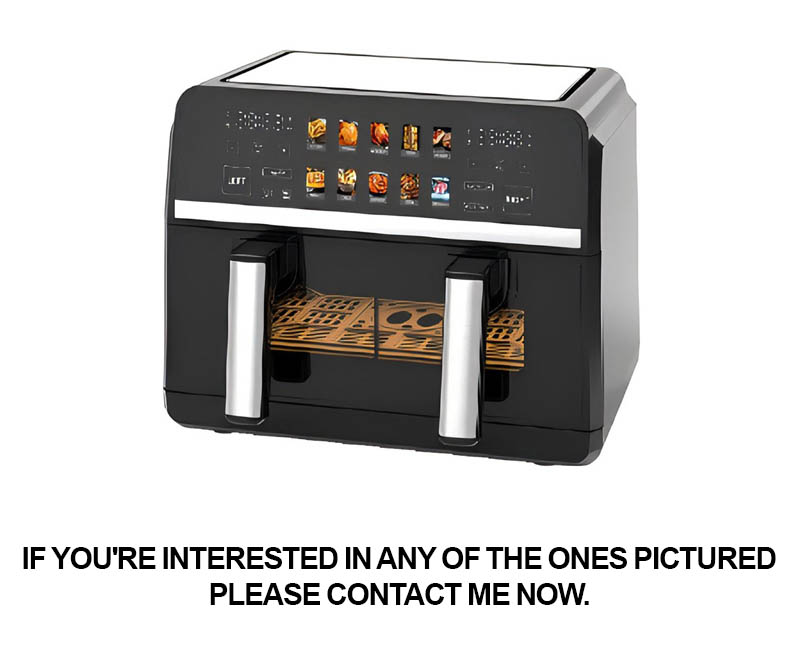
In the fast-paced world of kitchen appliance manufacturing, the importance of UL certification cannot be overstated. This globally recognized symbol of safety and quality is not just a regulatory checkbox but a testament to a brand’s commitment to excellence. Let’s delve into why UL certification is crucial in the kitchen appliance sector, specifically focusing on the rising trend of air fryers.
The assurance of safety is paramount when it comes to kitchen appliances. With UL certification, manufacturers ensure that their products meet stringent safety standards set by the Underwriters Laboratories. This certification process involves rigorous testing that covers electrical, mechanical, and fire safety aspects. For air fryers, which often come into close contact with cooking oil at high temperatures, this means verifying that the device’s heating elements, insulation, and materials can withstand heat and prevent electrical hazards.
Consumer trust is a valuable asset in any market, and UL certification is a powerful tool in building that trust. When a customer sees the UL mark on an air fryer, they’re more likely to believe that the product has been thoroughly tested for safety. This is especially important in a sector where accidents can occur due to misuse or defects. A product with UL certification is a reassurance that the manufacturer is serious about user safety and has taken all necessary precautions.
In a competitive landscape, differentiation is key, and UL certification offers a unique selling proposition. Brands that display the UL logo on their air fryers are not just marketing a product; they’re marketing a level of assurance that stands out from the competition. This certification is not just for safety but also for the quality of construction and performance. It’s a badge of honor that can sway purchasing decisions in a sea of similar-looking appliances.
The global nature of the kitchen appliance market means that products are often exported to different countries with varying regulations. UL certification is accepted in over 90 countries, making it a universally recognized standard. For manufacturers looking to expand their reach, having a product that complies with international safety standards can be the difference between gaining market access and facing trade barriers. This is particularly significant in regions where consumer awareness of safety standards is high.
The environmental impact of kitchen appliances is also a growing concern. UL certification includes assessments for energy efficiency, which is not only good for the planet but can also be a selling point for consumers who are looking for eco-friendly options. As the market becomes more environmentally conscious, air fryers that have been certified for energy efficiency are likely to appeal to a broader audience.
Regulatory compliance is another aspect where UL certification shines. Many countries have specific requirements for kitchen appliances, and UL certification can often serve as a shortcut to meeting these regulations. This not only saves manufacturers time and resources but also reduces the risk of non-compliance, which can lead to costly recalls or fines.
Lastly, the certification process itself can be a source of innovation. manufacturers often invest in new technologies and design changes to meet UL standards, which can lead to improved product performance and features. This iterative process of development and certification can result in air fryers that are not just safe but also ahead of the curve in terms of technology and functionality.
In conclusion, UL certification is an invaluable asset in the kitchen appliance market, particularly for air fryers. It represents a commitment to safety, quality, and environmental responsibility, which are all critical factors in the minds of today’s consumers. As the market for air fryers continues to grow, manufacturers that prioritize UL certification are likely to enjoy a competitive edge that extends beyond just regulatory compliance.

In the ever-evolving landscape of kitchen appliances, the OEM (Original Equipment Manufacturer) market for air fryers has emerged as a significant sector. These customized, branded appliances are not just a trend but a strategic move for companies looking to differentiate themselves in a crowded marketplace. Let’s delve into the potential of OEM air fryers.
The Customization EdgeOEM air fryers offer a unique opportunity for brands to tailor their products to specific market needs or consumer preferences. Whether it’s a sleek design, advanced features, or a particular size, OEMs can work closely with manufacturers to create appliances that resonate with their target audience. This level of customization can be a game-changer in a market where consumers are increasingly seeking personalized experiences.
Global Market ExpansionAs the demand for healthy cooking alternatives grows, OEM air fryers have the potential to tap into diverse international markets. For instance, regions with a preference for fried foods can benefit from air fryers that offer a healthier alternative. OEMs can adapt their products to local tastes and regulations, making it easier for brands to enter new markets with a product that’s already primed for success.
Innovation and Technology IntegrationThe OEM model allows for the seamless integration of the latest technologies into air fryers. This means that brands can offer cutting-edge features such as smart connectivity, which allows users to control their appliances remotely via an app. By staying ahead of the curve with innovative features, OEM air fryers can attract tech-savvy consumers who are looking for the latest in kitchen technology.
Brand Loyalty and RecognitionWhen a brand partners with an OEM to produce air fryers, it has the chance to strengthen its brand identity. A well-designed, high-quality air fryer can become a symbol of the brand’s commitment to innovation and quality. This can lead to increased brand loyalty and recognition, as consumers associate the brand with the positive experience of using the appliance.
Cost-Effective ProductionOEM partnerships often come with cost advantages. By outsourcing the manufacturing process, brands can reduce production costs and focus on other aspects of their business. This cost-effectiveness can be passed on to consumers, making the product more accessible and competitive in the market.
Diverse Product LineupsOEM air fryers enable brands to offer a wide range of products within their lineup. From countertop models to larger, commercial-grade appliances, the flexibility of the OEM model allows brands to cater to different segments of the market. This diversity can help brands capture a larger share of the air fryer market.
Marketing and Sales SynergyWhen a brand releases an OEM air fryer, it can leverage existing marketing channels and sales strategies. The familiarity of the brand with its customers can create a smooth transition and a strong sales performance. Additionally, the OEM partner can provide valuable insights into market trends and consumer behavior, enhancing the brand’s marketing efforts.
Regulatory ComplianceIn many countries, kitchen appliances must comply with stringent safety and regulatory standards. OEM air fryers are typically designed with these standards in mind, ensuring that the products meet local requirements. This compliance can be a major selling point for brands looking to enter new markets or expand their product offerings.
Environmental SustainabilityAs sustainability becomes a key concern for consumers and businesses alike, OEM air fryers can be designed with eco-friendly materials and energy-efficient technologies. This focus on sustainability not only appeals to environmentally conscious consumers but also positions the brand as a leader in responsible product development.
In conclusion, the potential of OEM air fryers is vast, offering brands the chance to innovate, expand their market reach, and build stronger customer relationships. The ability to customize, integrate new technologies, and maintain cost-effectiveness all contribute to the appeal of this strategic approach in the kitchen appliance industry.
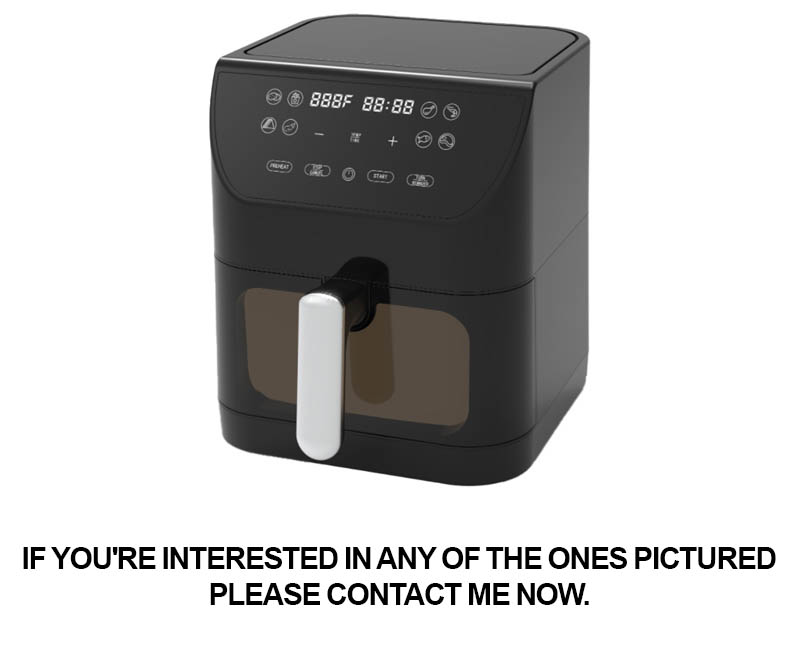
In recent years, the air fryer market has seen a surge in popularity, and with this growth comes a wave of innovation in design. These advancements are not only making air fryers more efficient and user-friendly but also expanding their capabilities beyond traditional cooking. Here are some of the key innovations shaping the air fryer design landscape:
The integration of smart technology has revolutionized the way air fryers operate. Modern models are now equipped with digital displays, allowing users to easily select cooking modes, set temperatures, and timers. Some high-end air fryers even feature Wi-Fi connectivity, enabling remote control and monitoring through smartphone apps. This integration enhances convenience and ensures that users can achieve perfect results every time.
One of the most significant innovations in air fryer design is the evolution of heating elements. Early models relied on a single heating element that often resulted in uneven cooking. Today, air fryers come with multi-layered heating systems that distribute heat more evenly, ensuring that food is crispy on the outside and tender on the inside. This technology has greatly improved the quality of air-fried dishes.
The design of air fryers has also become more compact and space-saving. Manufacturers have managed to reduce the size of these appliances without compromising on cooking capacity. This is particularly beneficial for small kitchens or those with limited counter space. The sleeker profiles of modern air fryers also contribute to a more stylish and modern kitchen aesthetic.
Efficiency is a top priority in the design of new air fryers. Energy-saving features like automatic shut-off and adjustable temperature settings help reduce electricity consumption. Additionally, some models are designed to use less oil than traditional deep-frying methods, making them more environmentally friendly and healthier for consumers.
Safety has been a driving force behind the design innovations in air fryers. Modern models often come with features like non-stick interiors that make cleaning easier and reduce the risk of food sticking. Some air fryers also include safety locks to prevent accidental operation, especially important for households with children. The inclusion of overheat protection and easy-to-use controls adds an extra layer of safety to these appliances.
The ability to cook a variety of foods is a hallmark of innovative air fryer designs. Many models now offer a range of cooking functions, including roasting, baking, dehydrating, and reheating. This versatility allows users to replace multiple kitchen appliances with a single, multifunctional air fryer. The design of these appliances often includes adjustable racks and baskets to accommodate different types of cooking needs.
The design of air fryers has also embraced sustainability. Many manufacturers are using eco-friendly materials and components, such as recycled plastics and energy-efficient LED lighting. These efforts not only reduce the environmental impact of the product but also appeal to consumers who are increasingly conscious of their carbon footprint.
The aesthetic appeal of air fryers has also been enhanced. Modern designs feature sleek lines, contemporary colors, and finishes that blend seamlessly into any kitchen decor. Some models even come with customizable options, such as interchangeable exteriors, to match personal style preferences.
Innovations in air fryer design have also extended to the cooking process itself. The introduction of air-frying technology has allowed for healthier cooking methods by reducing the amount of oil needed. This has led to the development of healthier recipes and a growing market for air-fried snacks and meals.
Finally, the rise of social media and influencer culture has influenced air fryer design. Users are now looking for appliances that not only perform well but also look good on camera. This has prompted manufacturers to focus on creating visually appealing products that are as much a part of the kitchen’s aesthetic as they are a functional tool.
In conclusion, the design of air fryers has come a long way, offering consumers a wide range of features and benefits. From smart technology and compact sizes to safety features and sustainability initiatives, these innovations continue to push the boundaries of what’s possible in the kitchen appliance industry.

The air fryer market has witnessed a surge in popularity, with consumers increasingly seeking healthier cooking alternatives. This shift in preference has opened doors for innovative designs and features that cater to the evolving needs of consumers. Let’s delve into the latest market trends and consumer preferences shaping the air fryer industry.
Gone are the days when air fryers were seen as a mere novelty. Today, they have become a staple in many kitchens, thanks to their ability to offer crispy fried results with significantly less oil. Consumers are now looking for appliances that not only save on fat content but also on time and effort.
One of the prominent trends is the emphasis on convenience. With busy lifestyles, people are seeking kitchen gadgets that can simplify their cooking routines. Air fryers with intuitive interfaces, smart timers, and automatic shut-off features are becoming increasingly popular. The ability to program these appliances to cook a meal while you’re at work or engaging in other activities is a major draw for consumers.
Health consciousness is another driving force behind the air fryer’s rise in popularity. As people become more aware of the health risks associated with deep-frying, they are turning to air fryers as a healthier option. The low-fat cooking method appeals to those following low-carb, paleo, or keto diets, as well as individuals looking to reduce their overall calorie intake.
The market is also seeing a surge in eco-friendly designs. Consumers are not just concerned with their health but also with the environmental impact of their choices. Air fryers that use less energy and come with recyclable or biodegradable parts are gaining traction. The demand for sustainability in kitchen appliances is expected to grow, influencing the design and materials used in air fryers.
Customization is another trend that’s shaping the air fryer market. Users today want to be able to tailor their cooking experience to their specific tastes. Air fryers with adjustable temperature controls and various cooking programs allow for a wide range of recipes, from crispy French fries to moist chicken breasts. This versatility is a key factor in the appeal of modern air fryers.
Smart technology is making its way into kitchen appliances, and air fryers are no exception. With the integration of Wi-Fi and Bluetooth capabilities, air fryers can now be controlled remotely through smartphones or tablets. Users can monitor cooking progress, adjust settings, and even receive alerts when their food is ready. This level of connectivity is not only convenient but also promotes a more interactive cooking experience.
The rise of social media and online content has also influenced consumer preferences. Influencers and chefs are showcasing their culinary creations using air fryers, which has sparked a wave of interest among consumers. The ability to create impressive dishes at home with ease is a major attraction for those looking to impress their guests or simply enjoy a gourmet meal.
In terms of design, air fryers are becoming sleeker and more modern. The once bulky and utilitarian appliances are now sleek and stylish, fitting seamlessly into kitchen decor. The integration of LED lighting and digital displays adds a touch of sophistication to these devices, making them not just functional but also visually appealing.
Another important trend is the focus on safety. As air fryers generate heat, ensuring they are safe to use is crucial. Newer models come with features like cool-touch handles, child locks, and automatic temperature control to prevent overheating. These safety features are not just peace of mind for consumers but also a testament to the industry’s commitment to innovation and quality.
The market for air fryers is also becoming more diverse, catering to specific needs. There are now air fryers designed for specific diets, such as gluten-free models, and even air fryers tailored for commercial use in restaurants and catering services. This diversification is a response to the varied preferences and demands of consumers across different markets.
Lastly, the rise of subscription services for meal kits and pre-made ingredients has also influenced the air fryer market. These services often provide recipes that are specifically designed to be cooked in an air fryer, further promoting the appliance’s versatility and ease of use.
In conclusion, the air fryer market is driven by a combination of convenience, health consciousness, eco-friendliness, customization, smart technology, and aesthetics. As the industry continues to evolve, it’s clear that the consumer’s quest for the perfect kitchen gadget is far from over, and air fryers are leading the charge in meeting these ever-growing expectations.
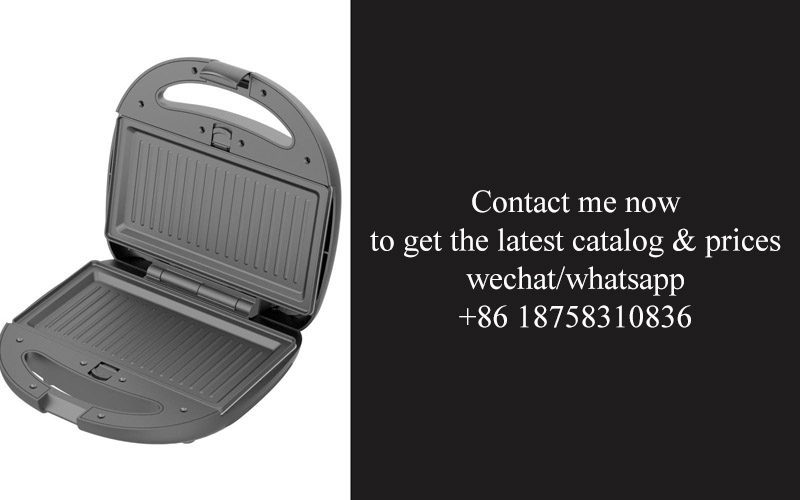
In the ever-evolving landscape of kitchen appliance manufacturing, data-driven insights have become a cornerstone for successful product development. Understanding consumer behavior, market dynamics, and technological advancements is crucial. Here’s a glimpse into how these insights shape the development of new products, with a focus on air fryers.
Air fryers, once a niche product, have surged in popularity due to their health benefits and convenience. The data-driven approach to their development involves several key aspects:
Consumer Behavior PatternsThe surge in demand for air fryers can be attributed to shifting consumer preferences. Data analytics reveal that health-conscious consumers are gravitating towards appliances that offer healthier cooking options. By analyzing sales data and consumer reviews, manufacturers can identify trends such as increased interest in low-fat, low-calorie cooking methods. This insight leads to the development of air fryers with features that cater to these dietary needs, like adjustable temperature controls and programmable cooking modes.
Market DynamicsStaying ahead in the competitive kitchen appliance market requires a deep understanding of market dynamics. Data-driven insights allow companies to monitor the entry of new competitors, the adoption rate of air fryers in different regions, and the pricing strategies of key players. This information helps manufacturers to tailor their product offerings to meet market demands. For instance, if data shows a higher demand in urban areas, manufacturers might focus on sleeker, more compact air fryers that fit into smaller kitchens.
Technological AdvancementsThe rapid pace of technological innovation necessitates a strategic approach to product development. Data-driven insights into emerging technologies, such as smart connectivity and energy efficiency, can guide the design of new air fryers. For example, incorporating smart features like Wi-Fi connectivity allows users to monitor and control their air fryers remotely, enhancing convenience and user experience. Similarly, data on energy consumption can lead to the development of more energy-efficient models that are both eco-friendly and cost-effective for consumers.
User Experience and DesignUnderstanding user experience is paramount in product development. Data gathered from user surveys, focus groups, and product testing provides valuable feedback on what features are most appreciated by consumers. This includes everything from ease of use to the aesthetics of the appliance. For instance, if users consistently mention the difficulty of cleaning certain parts of an air fryer, manufacturers can design future models with easier-to-clean components. Additionally, data on user preferences in design can lead to the creation of air fryers that not only perform well but also look attractive in modern kitchens.
Predictive AnalysisPredictive analytics play a crucial role in forecasting future market trends and consumer demands. By analyzing historical sales data and market research, manufacturers can predict which features will be popular in the next few years. This forward-thinking approach ensures that products are developed with a long-term vision, keeping them relevant and competitive in the marketplace.
Customer Support and ServiceData from customer support interactions and service records can also provide invaluable insights. Issues that arise after purchase can highlight areas for improvement in product design and functionality. For example, if a particular model frequently requires repairs, the data can indicate a design flaw that needs to be addressed in the next iteration of the product.
In conclusion, the role of data-driven insights in product development cannot be overstated. By leveraging consumer behavior patterns, market dynamics, technological advancements, user experience feedback, predictive analysis, and customer support data, manufacturers can create air fryers that not only meet but exceed consumer expectations. This approach ensures that the products remain at the forefront of innovation and consumer demand in the kitchen appliance industry.
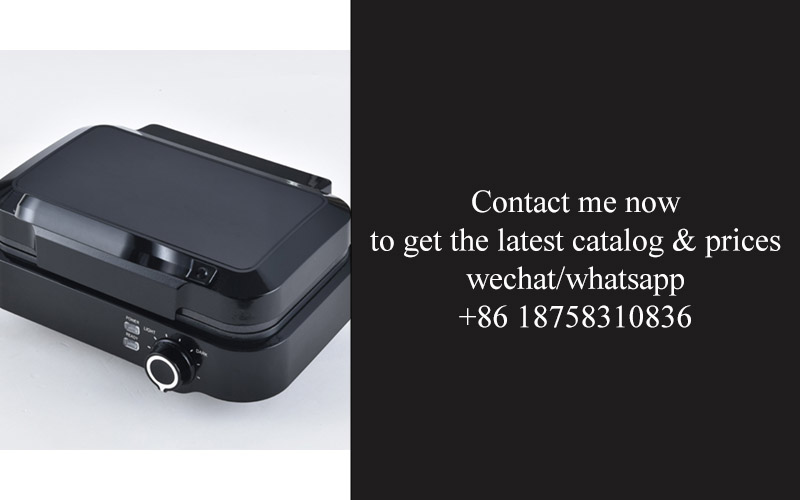
In one project, a global appliance manufacturer sought to diversify its product line with a high-quality, innovative air fryer. They partnered with a reputable OEM supplier who brought extensive expertise in air fryer design and production. The collaboration led to the development of a sleek, energy-efficient model that incorporated the latest technology and user-friendly features. This project showcased the potential of a well-strategized partnership between OEMs and appliance brands, resulting in a product that not only met market demands but also set new standards for the air fryer category.
Another success story involved a small startup that wanted to break into the market with a unique, eco-friendly air fryer. They partnered with an OEM that specialized in sustainable products. Together, they developed a model made from recycled materials and powered by renewable energy sources. This project highlighted the importance of combining environmental consciousness with advanced technology to appeal to eco-conscious consumers.
A mid-sized kitchen appliance company aimed to capture the attention of health-conscious consumers by introducing a line of air fryers that were low in fat and calories. They chose an OEM partner with a strong background in health and wellness product design. The resulting air fryer featured advanced temperature control, a variety of cooking modes, and a unique, compact design that made it easy to use and store. This project demonstrated how data-driven insights into consumer preferences can guide the creation of successful health-focused kitchen appliances.
An established appliance brand sought to refresh its air fryer line by incorporating smart technology. They worked with an OEM that had a proven track record in smart home device integration. The collaboration led to the development of an air fryer that could be controlled via a smartphone app, allowing users to monitor cooking times and temperatures remotely. This project illustrated the impact of leveraging data-driven insights to innovate within existing product lines and appeal to tech-savvy consumers.
In a bid to capture the attention of busy professionals, a kitchen appliance company introduced a line of air fryers with quick-cook features. They collaborated with an OEM that specialized in rapid-cooking appliances. The result was a line of air fryers that could prepare meals in a fraction of the time traditional cooking methods require. This project underscored the value of using data to identify and meet the needs of consumers with time-sensitive lifestyles.
A company known for its high-end kitchen appliances wanted to offer a premium air fryer that could compete with gourmet cooking. They turned to an OEM with experience in luxury appliance design. The outcome was an air fryer that offered precise temperature control, a wide range of cooking settings, and elegant aesthetics. This project exemplified how data-driven insights can guide the creation of products that cater to consumers seeking premium experiences in their homes.
A major appliance retailer sought to differentiate its air fryer offerings by focusing on safety features. They partnered with an OEM that excelled in safety engineering. The resulting air fryer featured multiple safety mechanisms, such as auto shut-off and cool-touch surfaces, making it one of the safest on the market. This project showcased the power of using data to enhance consumer confidence in product safety.
These case studies highlight the diverse range of turnkey air fryer projects that have been successfully completed through collaboration between OEMs and appliance manufacturers. From eco-friendly designs to smart technology integration, each project demonstrates how data-driven insights can drive innovation, meet consumer preferences, and ultimately lead to the development of successful air fryer products.
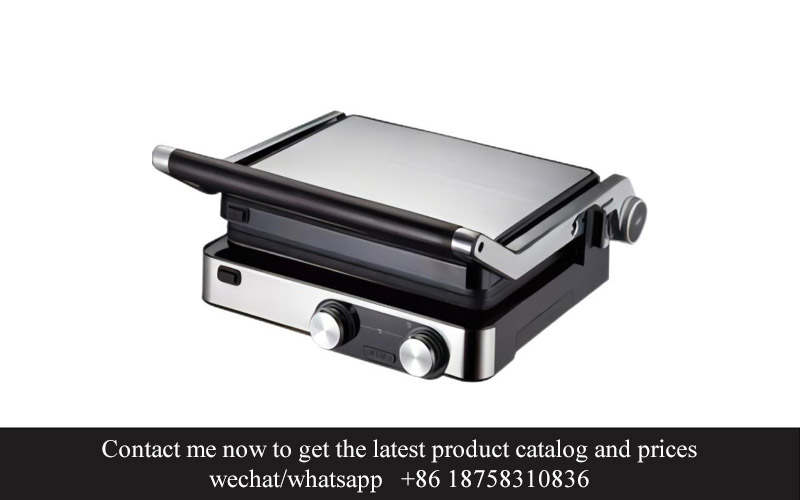
In the ever-evolving landscape of kitchen appliances, air fryers have surged in popularity, becoming a staple in modern households. The shift towards healthier cooking methods has propelled the demand for turnkey air fryer solutions, offering manufacturers and consumers alike a streamlined path to success. This conclusion delves into the future of Original Equipment Manufacturer (OEM) air fryers and turnkey solutions, highlighting the trajectory of this dynamic market.
As the culinary world embraces innovation, the integration of smart technology and energy efficiency into air fryers is set to become the norm. OEMs are poised to lead this charge, crafting appliances that not only cater to health-conscious consumers but also offer convenience and ease of use. The future of air fryer OEM and turnkey solutions lies in the seamless fusion of cutting-edge technology with user-friendly design.
The rise of eco-consciousness has also influenced the market, with consumers increasingly seeking appliances that are both sustainable and performant. OEMs that prioritize the use of recyclable materials and energy-saving features will find a competitive edge in the marketplace. Turnkey solutions that include these eco-friendly aspects are likely to gain traction as the industry moves towards more sustainable practices.
Customization is another area where OEMs can differentiate their offerings. By providing turnkey solutions that allow for branding and feature adjustments, manufacturers can cater to a wider range of customer needs. This flexibility is particularly valuable in the B2B sector, where corporate clients often require appliances that align with their brand identity and operational requirements.
Collaboration between OEMs and designers is crucial in the development of these tailored turnkey solutions. By combining creative expertise with technical knowledge, the industry can push the boundaries of what air fryers can offer. This synergy leads to innovative products that not only meet current market demands but also anticipate future trends.
The rise of e-commerce has expanded the market reach for air fryer OEMs. With online platforms becoming the go-to source for many consumers, having a turnkey solution that is easily adaptable for online sales is essential. This includes not just the physical product but also the packaging, marketing materials, and customer service support. The ability to scale operations quickly and efficiently is a hallmark of successful OEMs in the digital age.
Another critical factor in the future of air fryer OEM and turnkey solutions is the integration of health and wellness features. As consumers become more aware of the benefits of air frying over traditional frying methods, OEMs can capitalize on this trend by offering appliances that are equipped with features like adjustable temperature controls, preset cooking programs, and even health tracking capabilities.
The global nature of the appliance market means that OEMs must also consider cultural nuances when developing turnkey solutions. Understanding regional preferences and dietary restrictions is key to creating products that resonate with diverse consumer bases. This requires a deep understanding of local markets and the ability to adapt products accordingly.
Innovation in materials and manufacturing processes is also a driving force behind the future of air fryer OEM and turnkey solutions. As technology advances, we can expect to see lighter, more durable, and aesthetically pleasing air fryers hitting the market. The use of advanced materials not only enhances the performance of the appliances but also contributes to their overall appeal.
Furthermore, the rise of the subscription economy is creating new opportunities for OEMs. By offering turnkey solutions that include maintenance and upgrade packages, manufacturers can establish long-term relationships with customers. This model not only ensures repeat business but also fosters a sense of community and brand loyalty.
In conclusion, the future of air fryer OEM and turnkey solutions is bright, driven by a combination of technological advancements, environmental consciousness, and customer-centric innovation. As the market continues to evolve, OEMs that can adapt to these changing dynamics will be well-positioned to lead the industry into a new era of kitchen appliances.